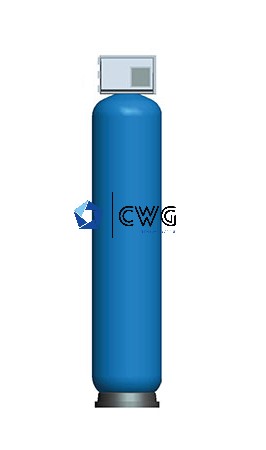IRON AND MANGANESE
Iron and manganese are two common elements that can occur in water and cause water quality problems.
These elements often occur naturally in soil and rocks and can reach water sources through erosion, rainwater or groundwater. Their presence in water can have various negative effects on the taste, color, smell and general quality of water.
How it comes to them:
Iron and manganese dissolve in water from natural rocks and soils and can end up in water sources as a result of natural processes. In some cases, human activities such as mining or industrial activities can also increase the presence of iron and manganese in water.
Demonstration in water:
The presence of iron in water often results in the formation of a reddish or brown color, which can affect the appearance and acceptability of drinking water. It can also leave marks on surfaces such as sinks, bathtubs and toilets. Manganese, on the other hand, can contribute to the black, dark color of water and create sediments in pipelines and tanks.
Problems caused by iron and manganese:
- Aesthetic problems:
The presence of iron and manganese in water can change its color, taste and smell, making it less acceptable for drinking and consumption.
- Deposition in pipelines:
Excess iron and manganese can build up in water pipes, reducing water flow and increasing the risk of clogging.
- Equipment damage:
Iron and manganese deposits can cause damage to equipment such as heaters, valves and filtration devices.
- Increasing the need for disinfection:
Iron and manganese can reduce the effectiveness of water disinfection, which can lead to an increased need to use disinfection chemicals.
- Impact on biological processes:
The high presence of iron and manganese can affect biological processes in water, including the growth of microorganisms and algae.
To solve problems caused by iron and manganese, techniques such as coagulation and flocculation, filtration, ionization, oxidation and the use of special media to remove these elements from water are used.
Regular water testing and analysis are important to monitor the presence of these elements and take measures to maintain safe and quality drinking and use water.






The most commonly used technologies to prevent the presence of iron and manganese in water include:
- Oxidation: Oxidation is a process that involves adding oxygen or oxidizing chemicals to water to convert dissolved forms of iron and manganese into solid particles that can be easily filtered. The oxidized particles can then be removed via the filtration process.
- Filtration: Filtration is an effective way to remove iron and manganese particles from water. Different types of filters, such as sand, activated carbon and mechanical filters, are used to capture and retain these particles as water passes through the filter medium.
- Coagulation and flocculation: The addition of coagulant chemicals to water promotes the agglomeration of fine iron and manganese particles, which facilitates their removal through the flocculation process. Large lumps of agglomerated particles are easier to settle and can be removed through the deposition process.
- Ionization: Ionization involves the use of ionization systems that use electrical charges to attract and retain iron and manganese particles. This process allows particles to collect on electrodes or surfaces with an electric charge.
- Absorption media: Absorption media, such as zeolite and specific compounds of iron and manganese, can be used as filtration materials. These media attract and retain iron and manganese on their surfaces, thereby reducing their presence in the water.
- Chemical processing: Chemicals such as potassium permanganate can be added to water to oxidize iron and manganese and turn them into particles that are easily deposited. These chemicals can also trigger deposition and flocculation processes.
- Combined technologies: Combinations of multiple technologies are often used to achieve optimal efficiency in removing iron and manganese from water. For example, oxidation may be accompanied by filtration or deposition to ensure the thorough removal of these particles.
Each of these technologies has its advantages and limitations, so it is important to choose the appropriate technology depending on the specific characteristics of the water and the needs of the system. Regular water testing and consultation with water treatment experts are essential to ensure the effective and safe removal of iron and manganese from water.
